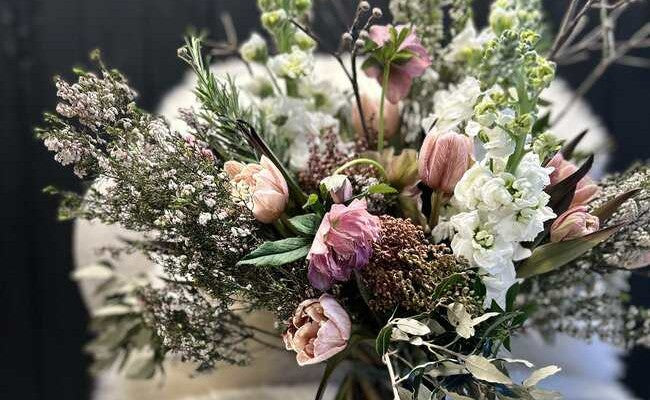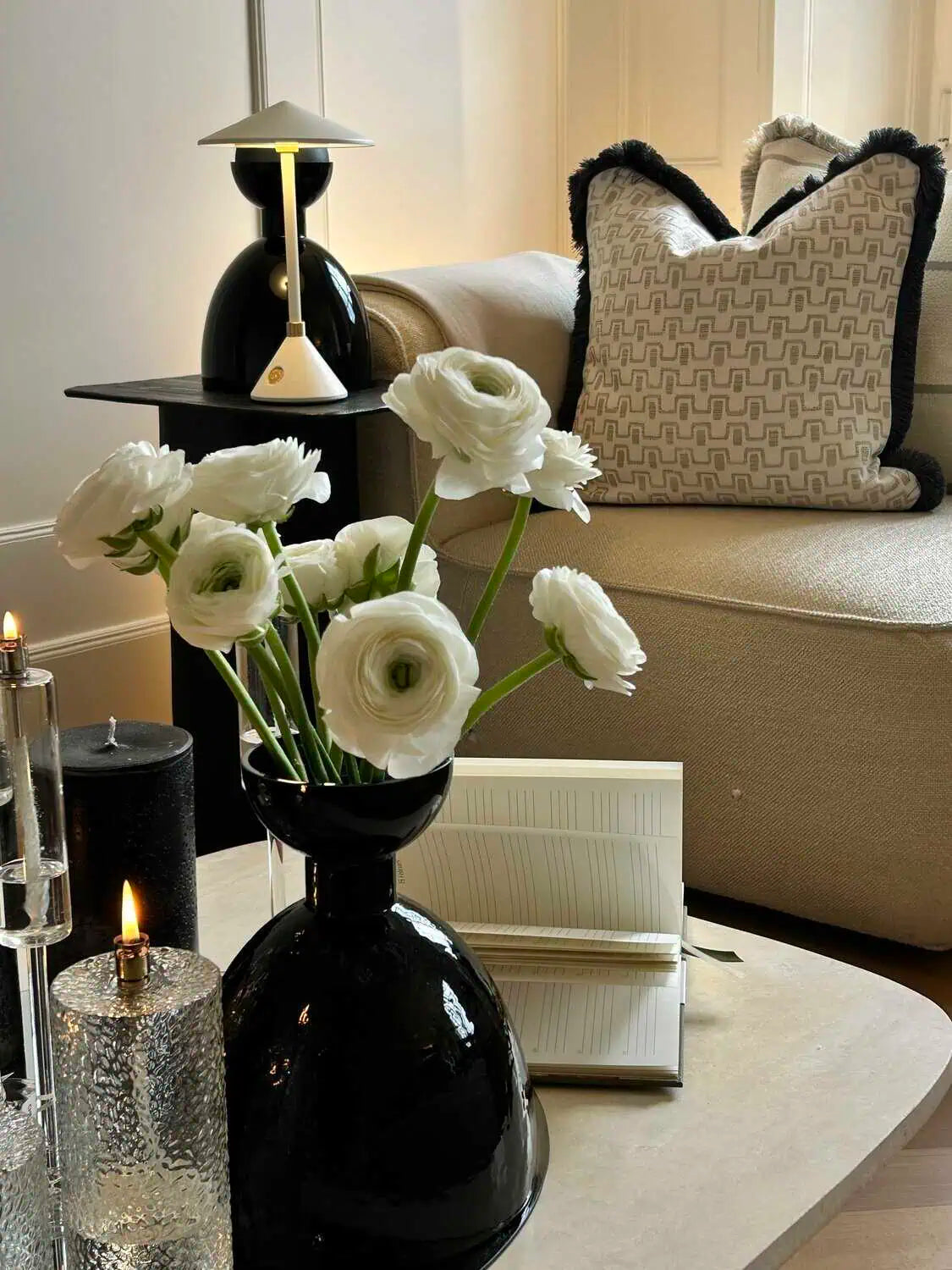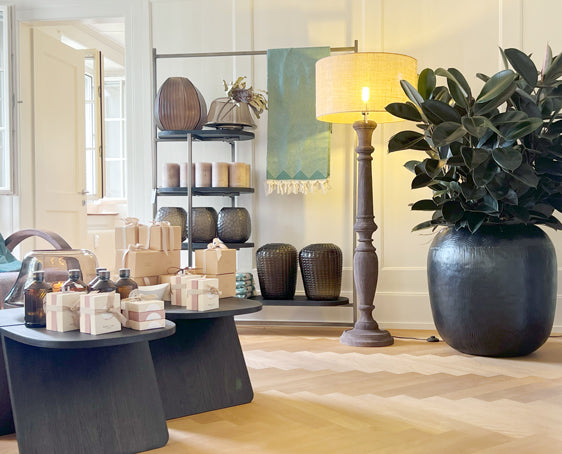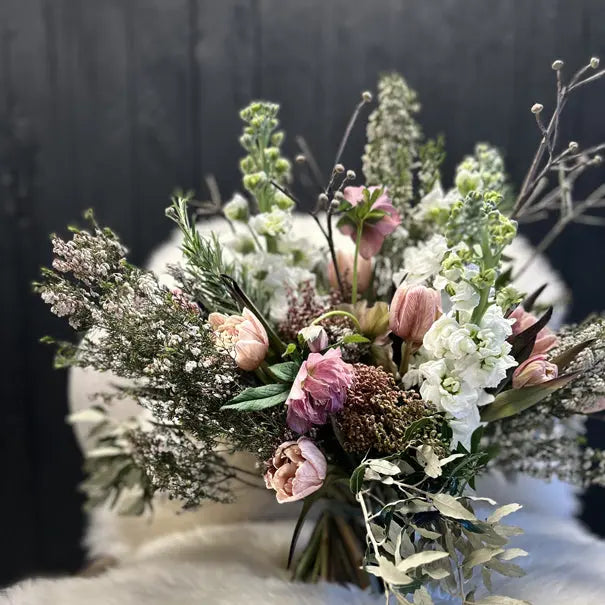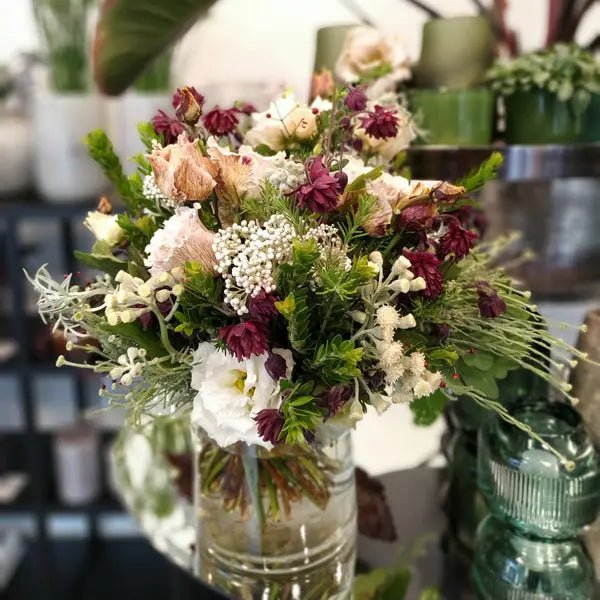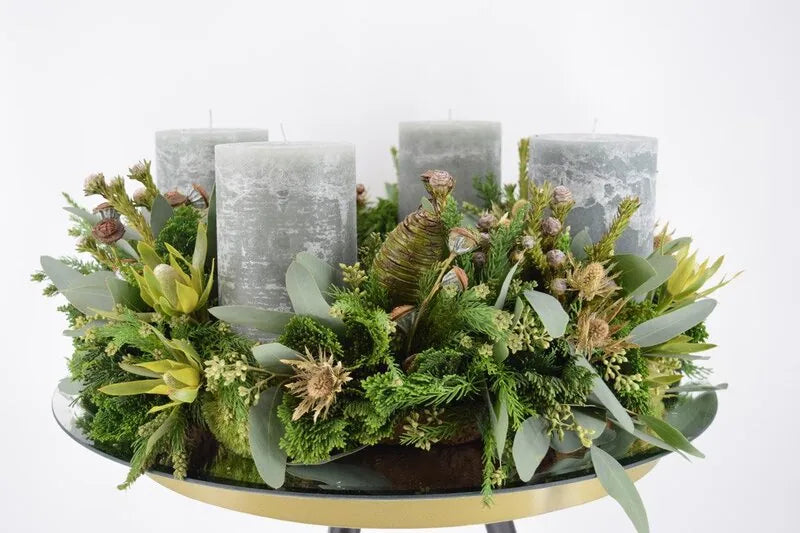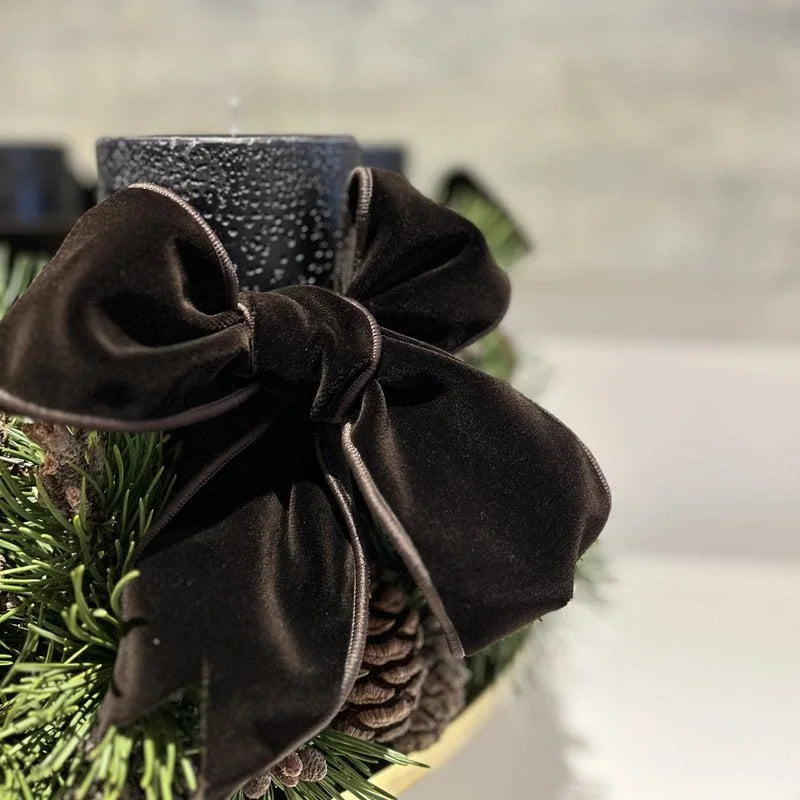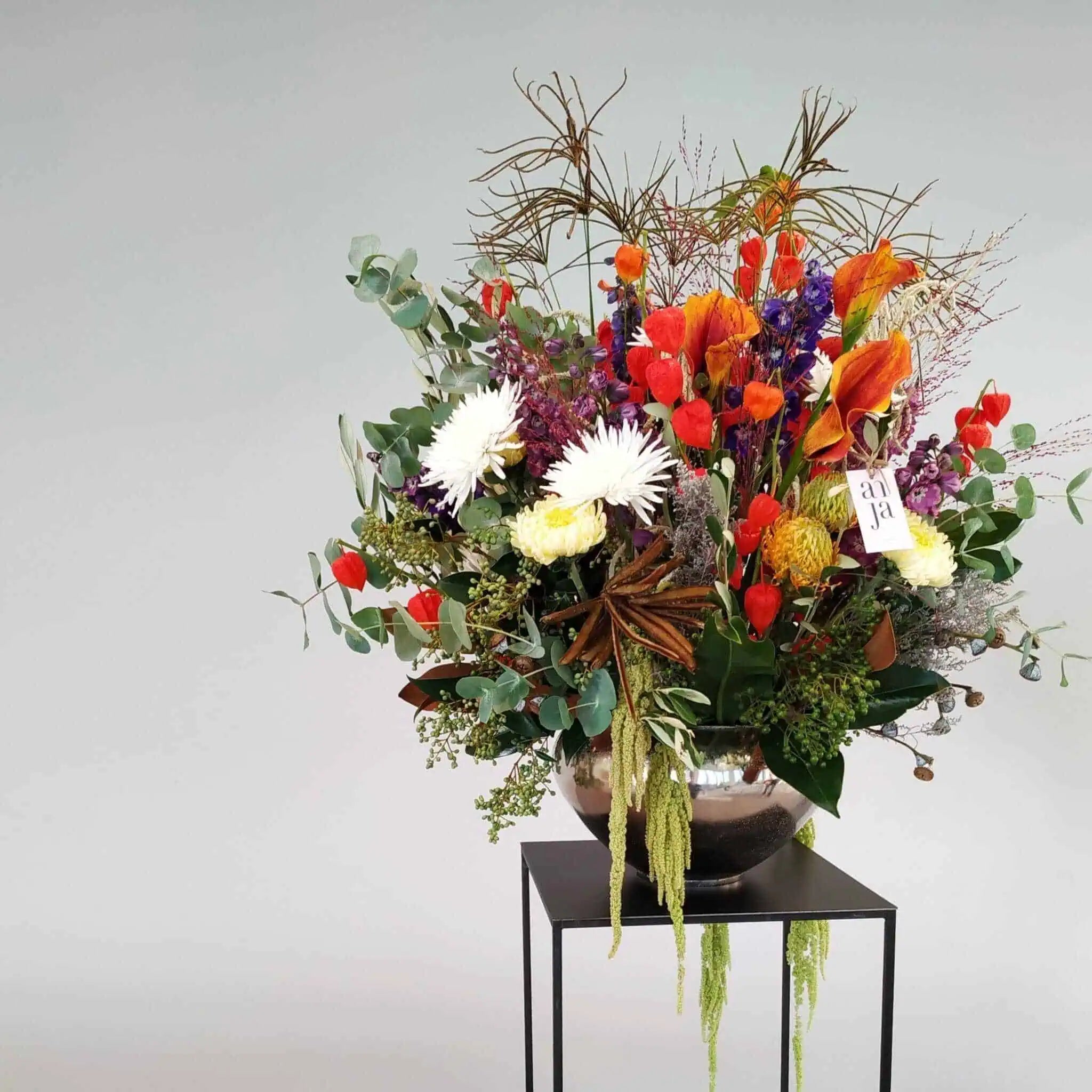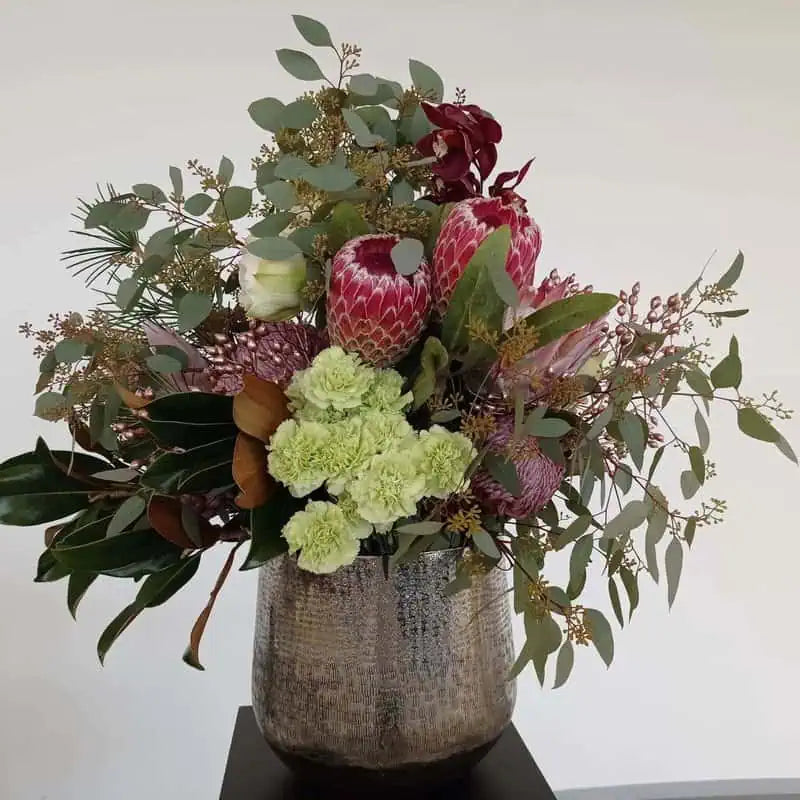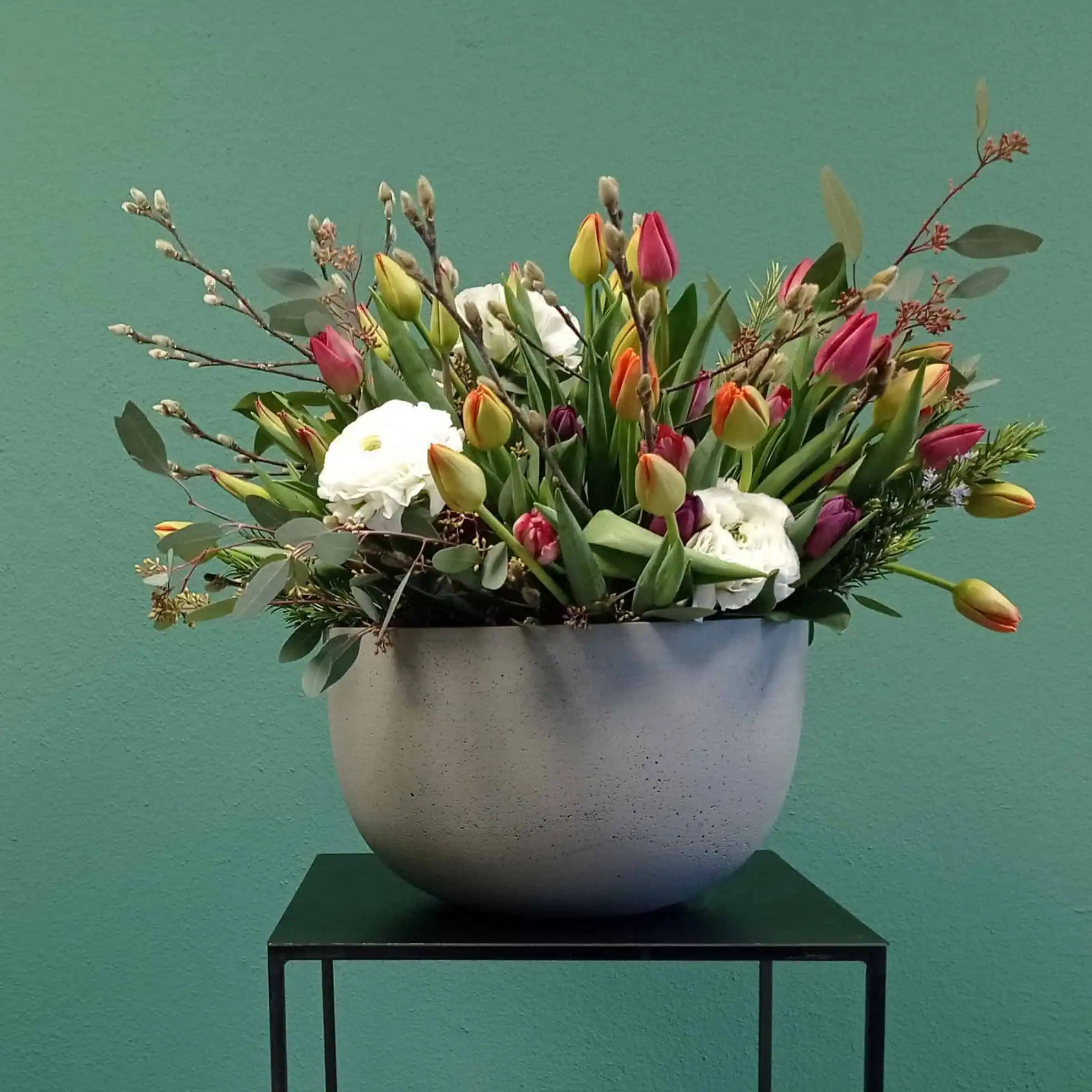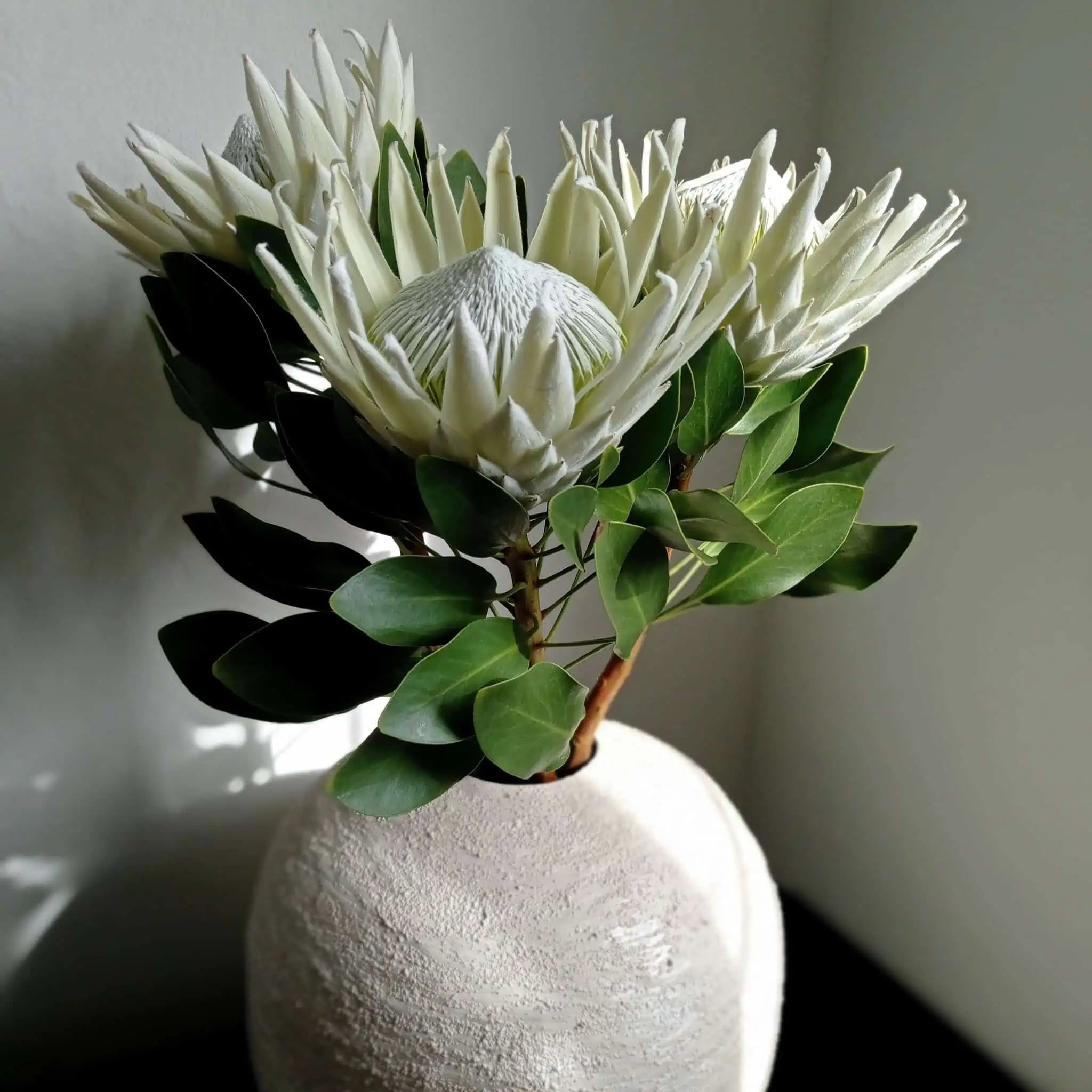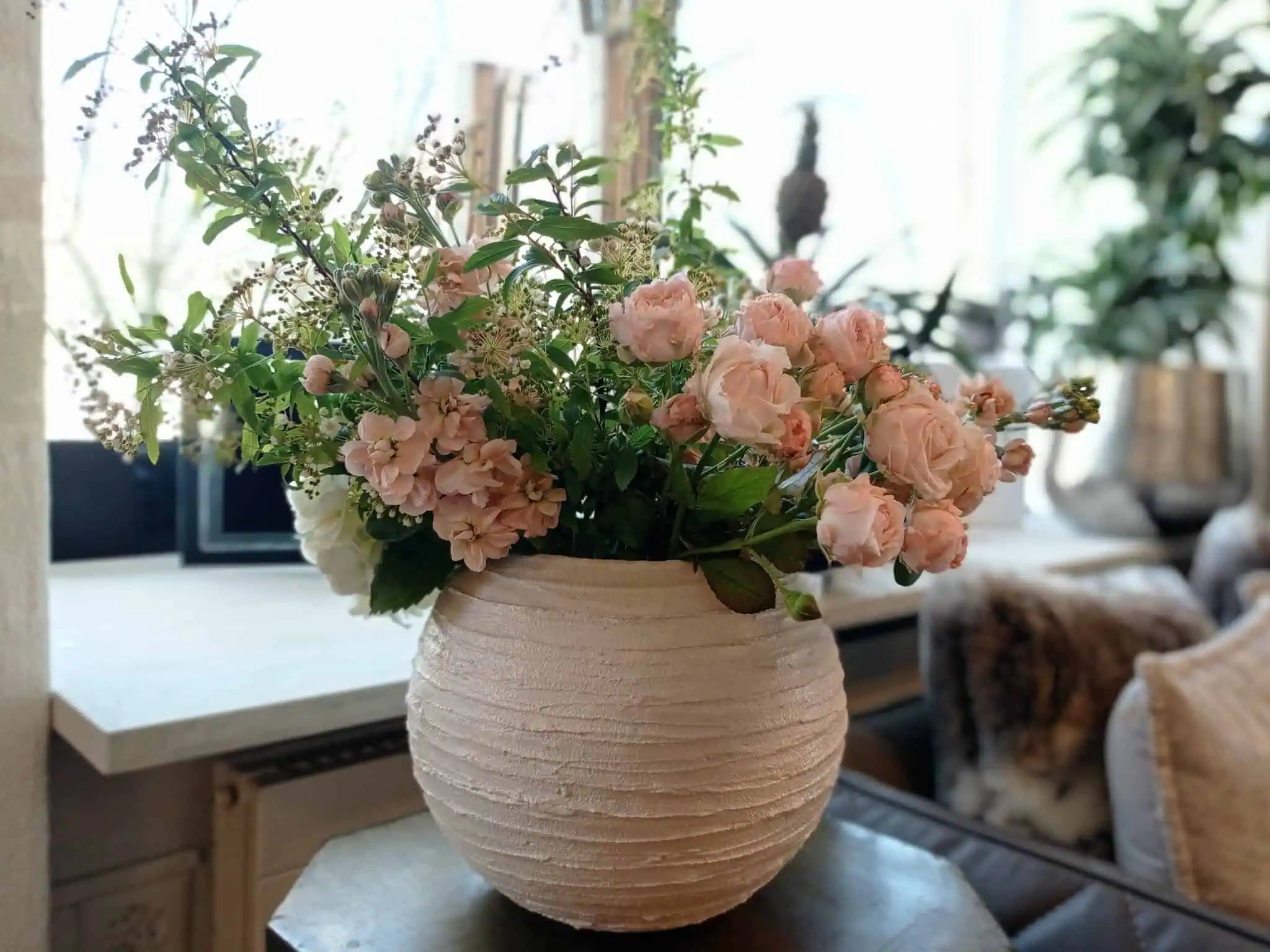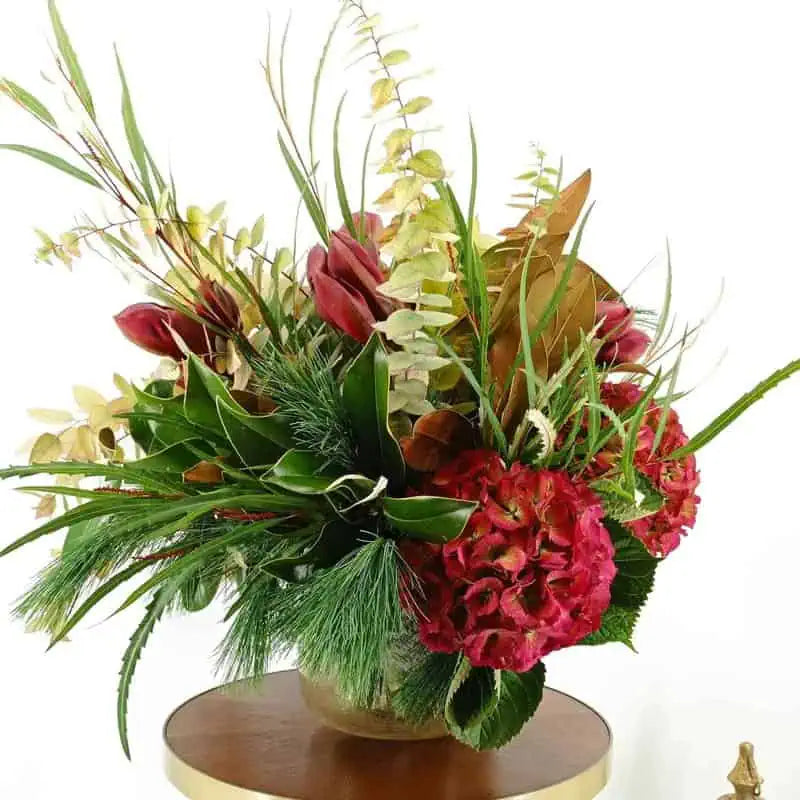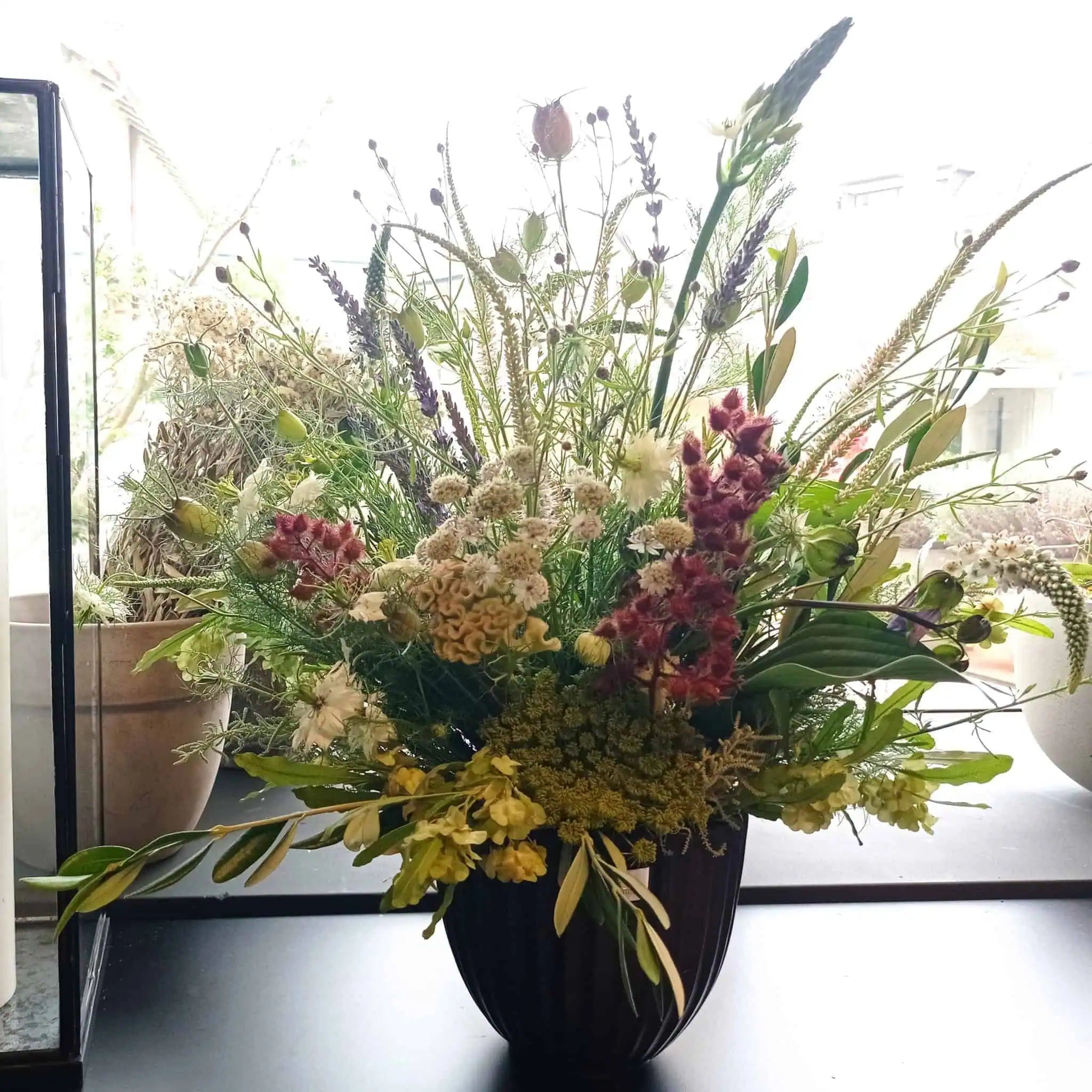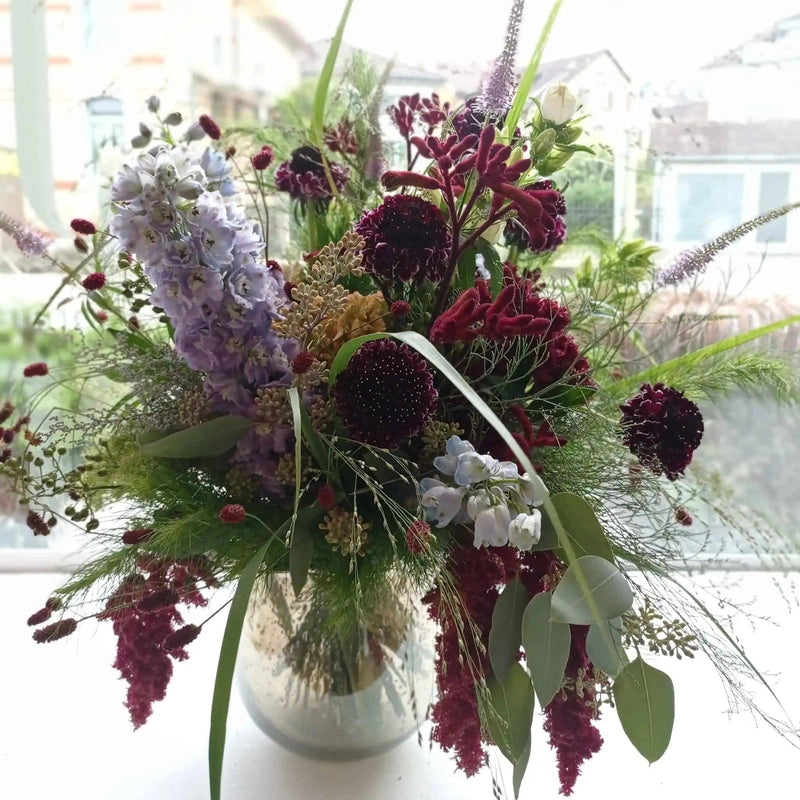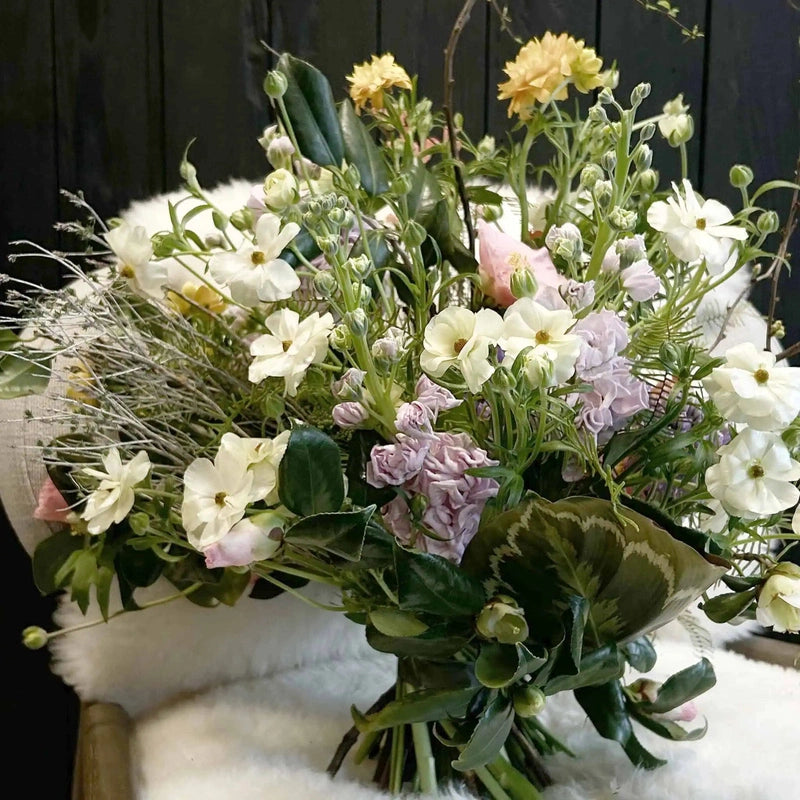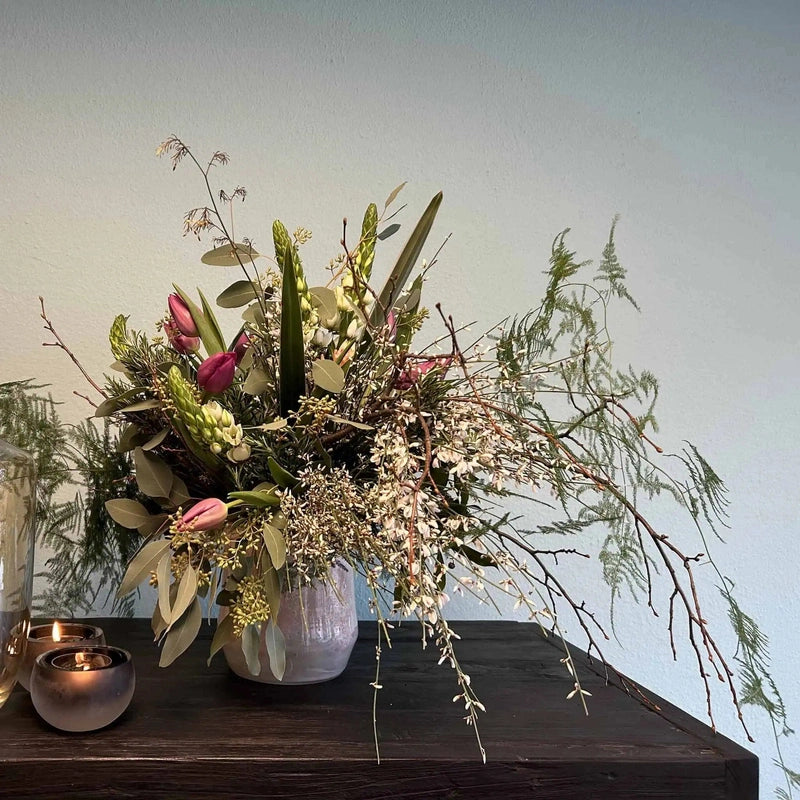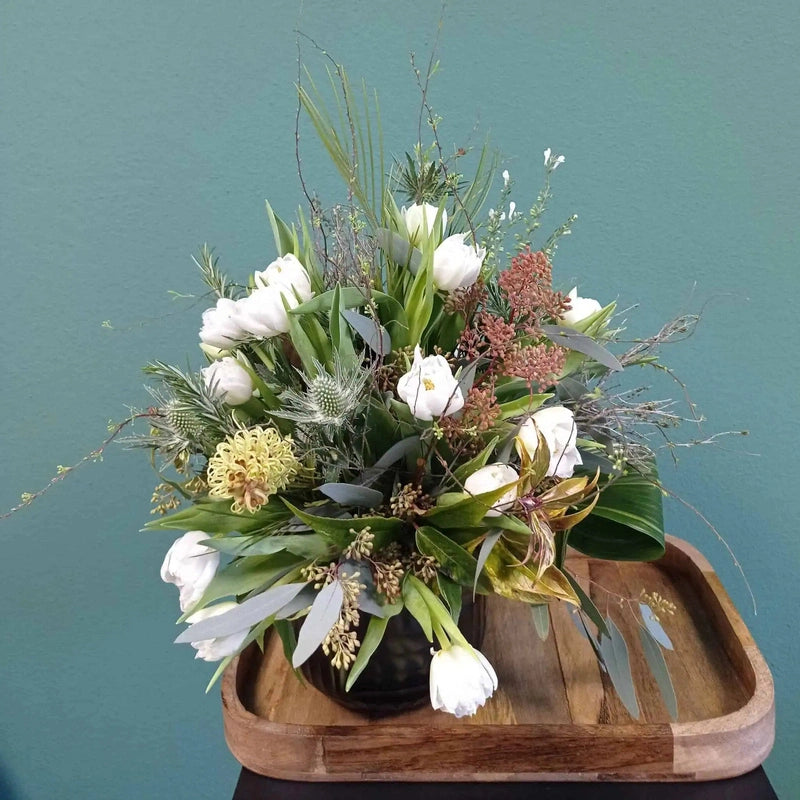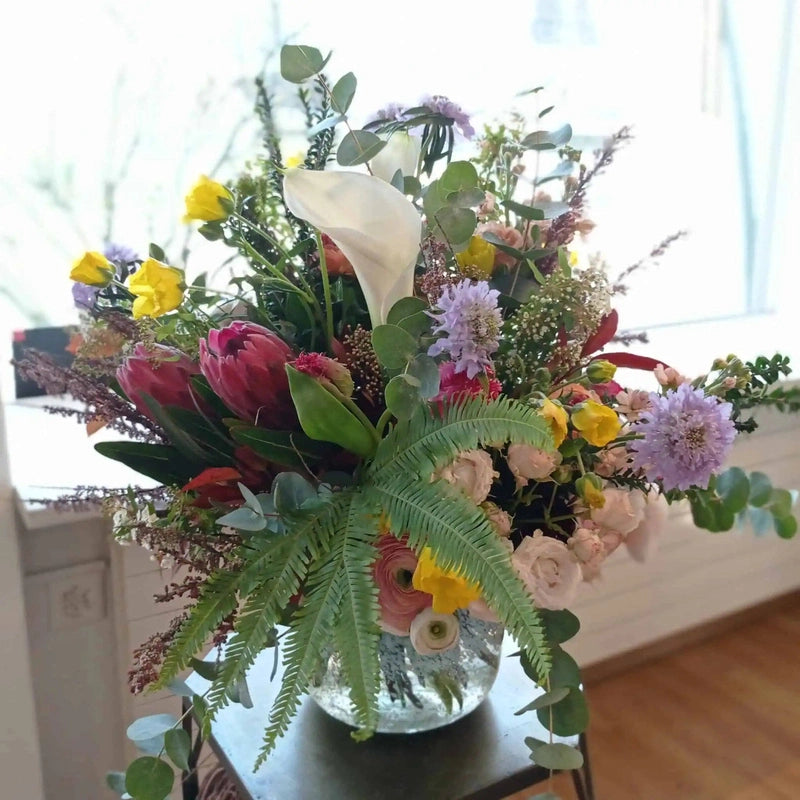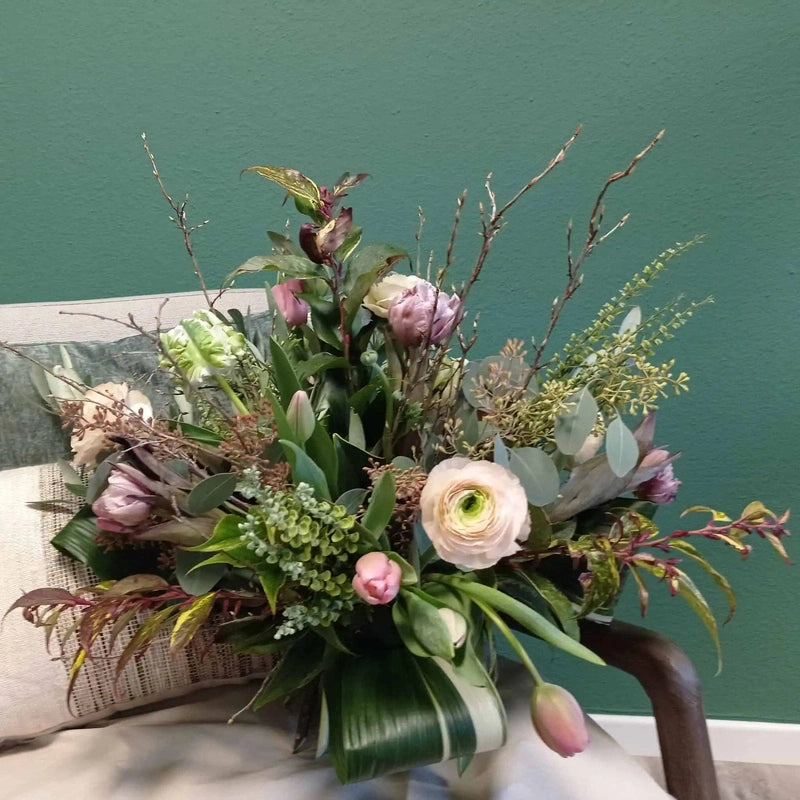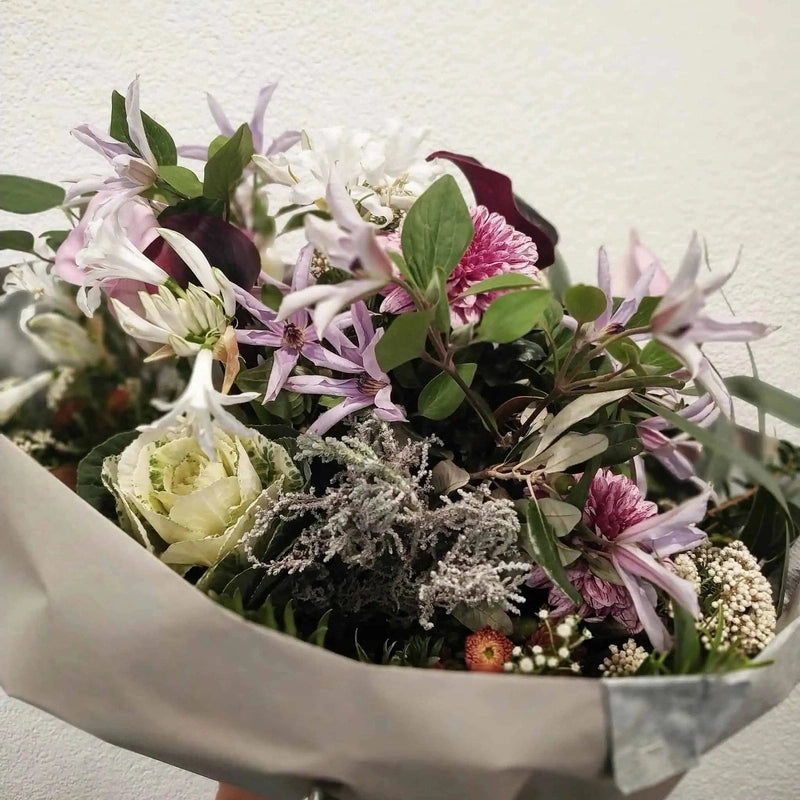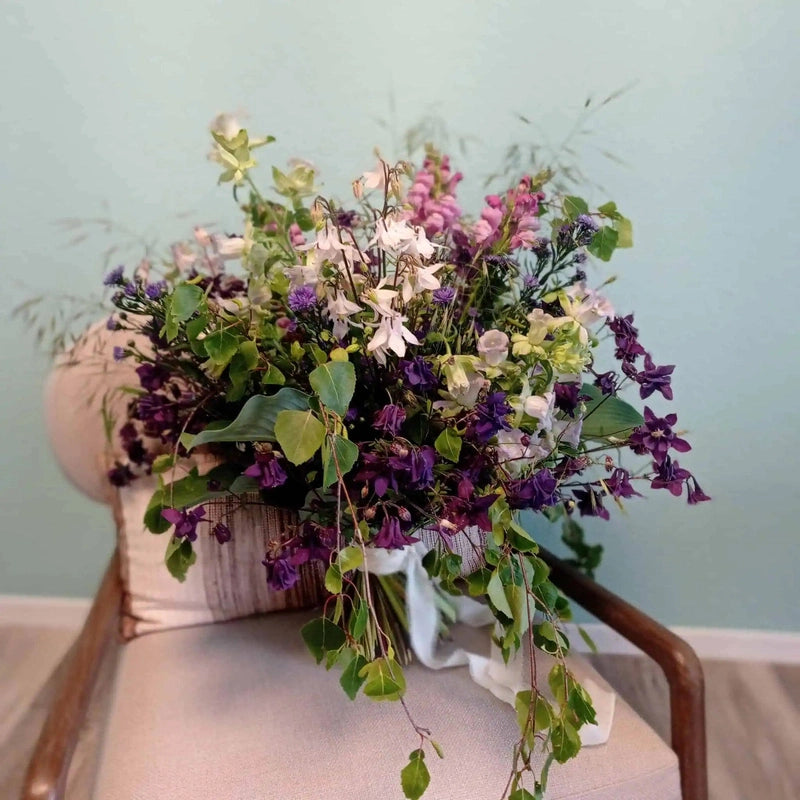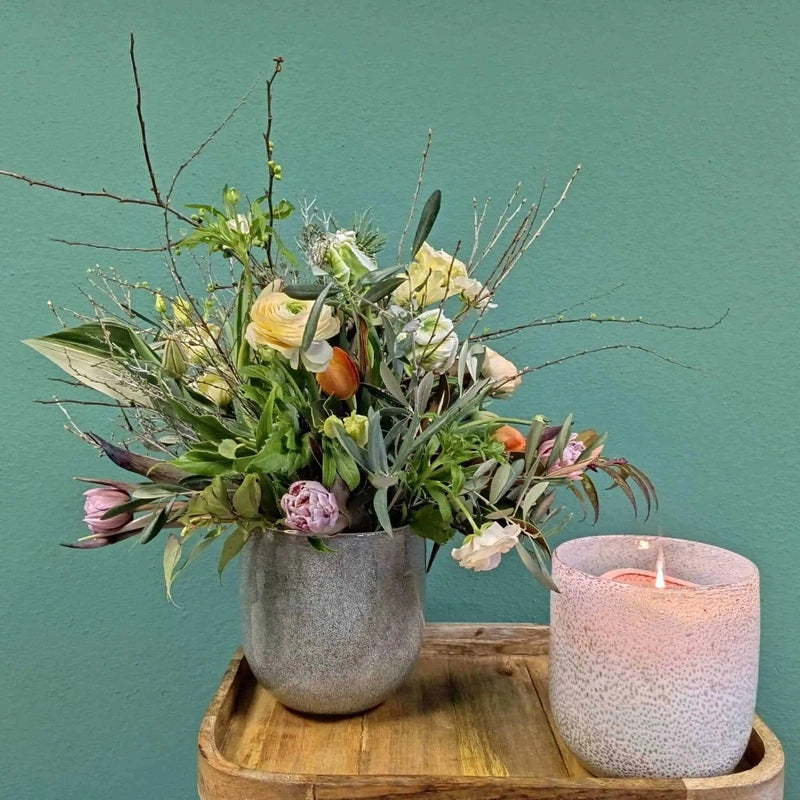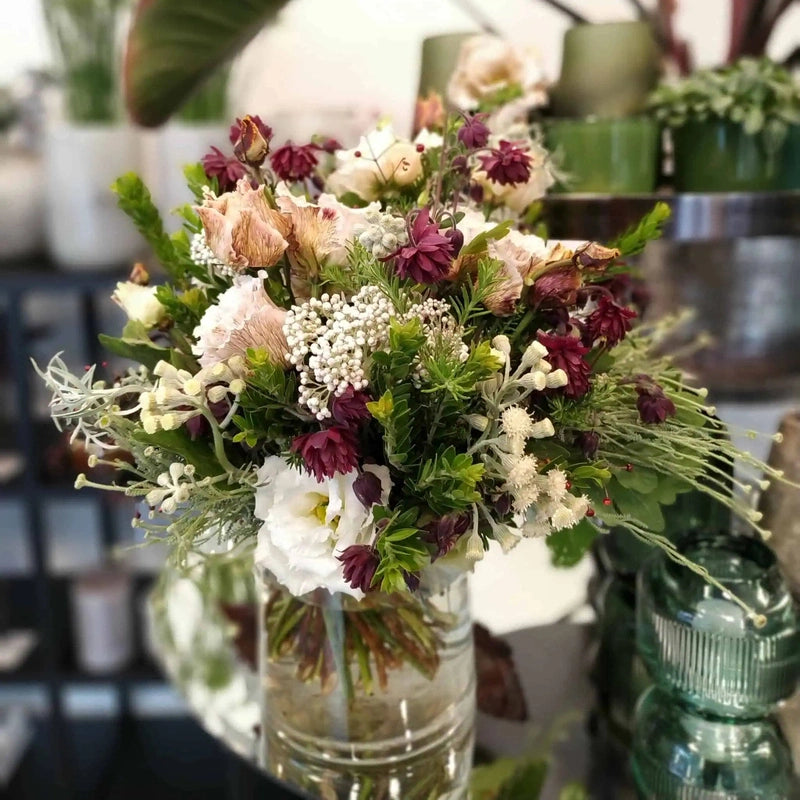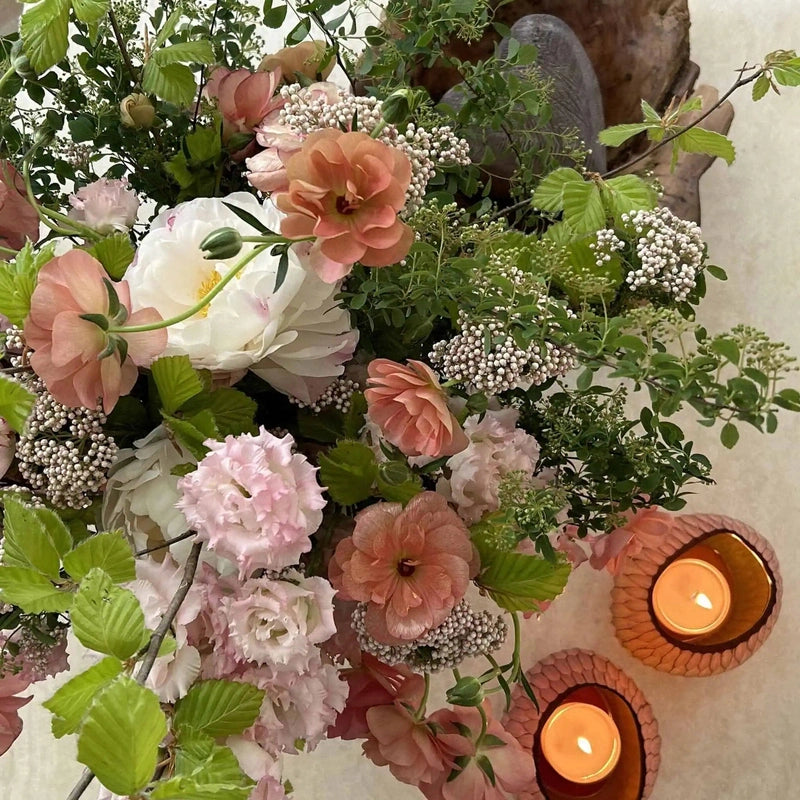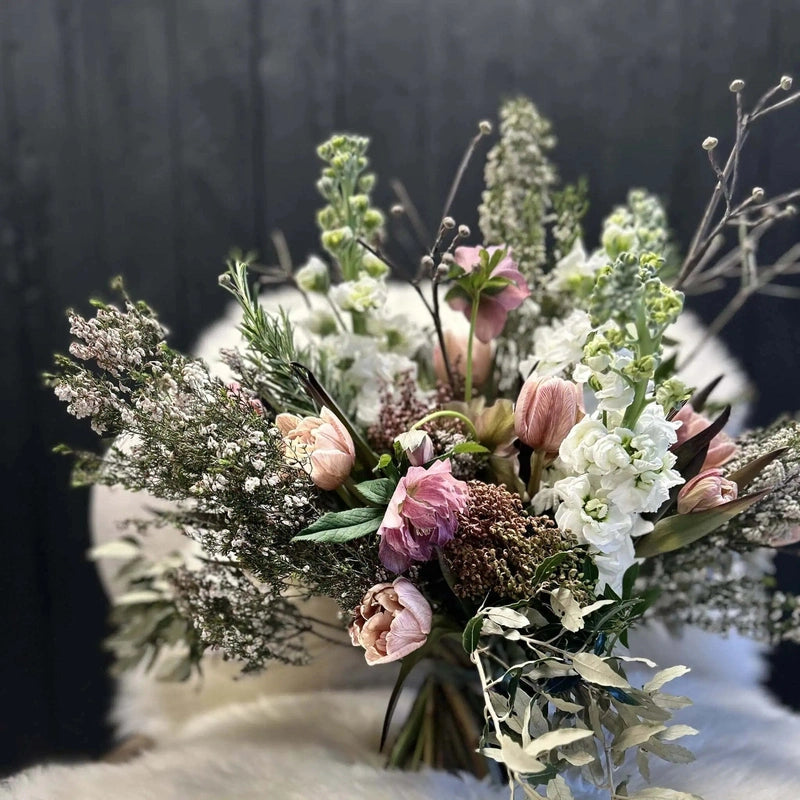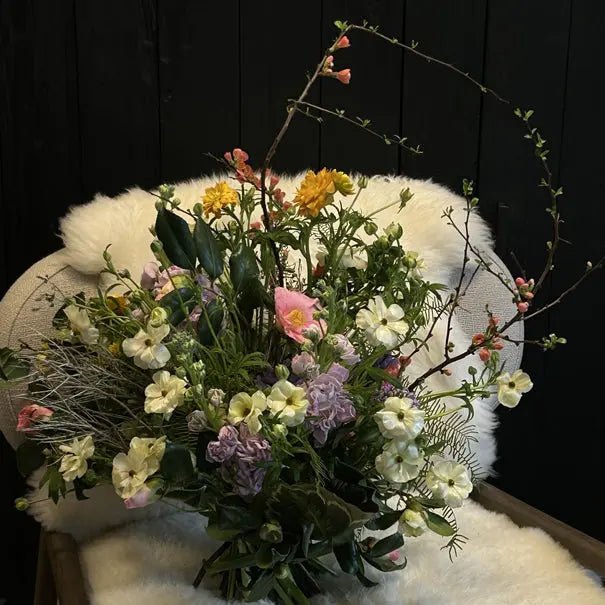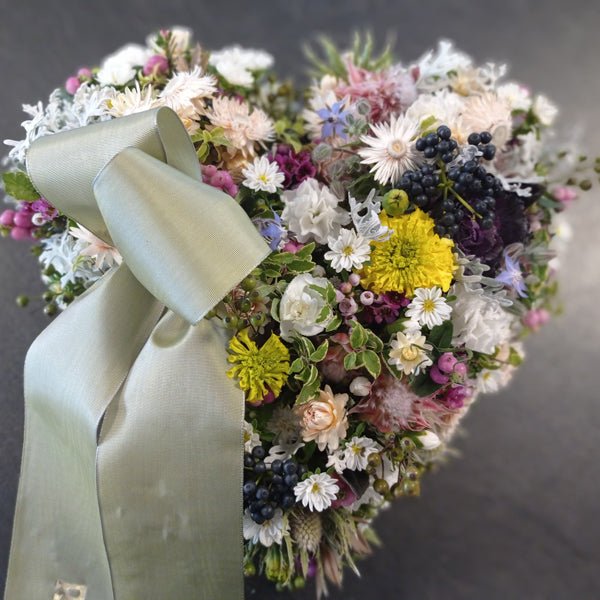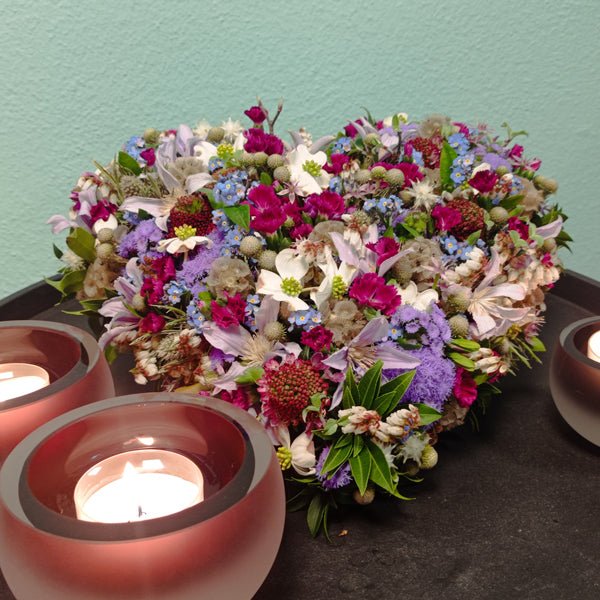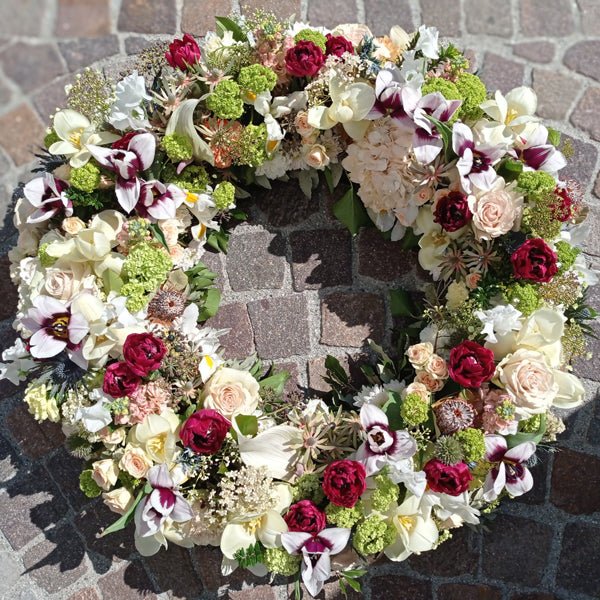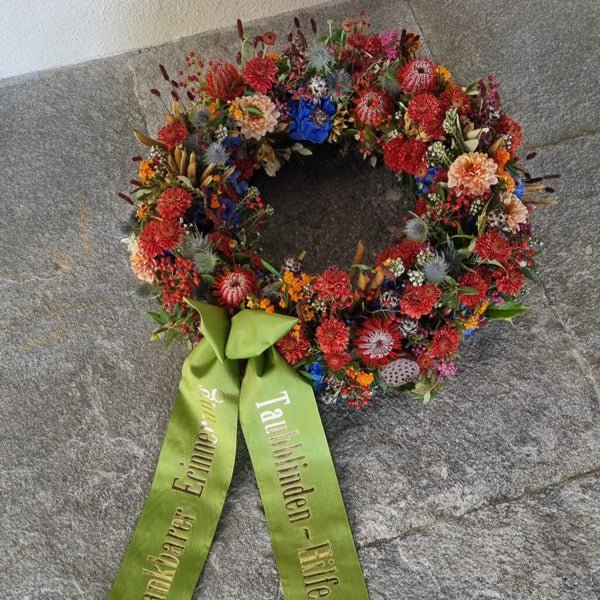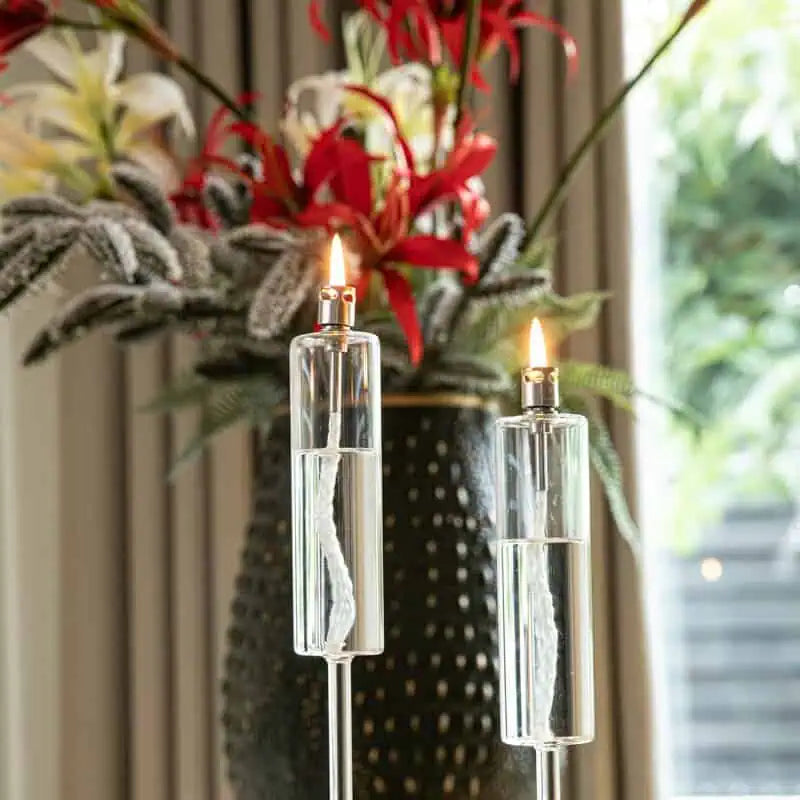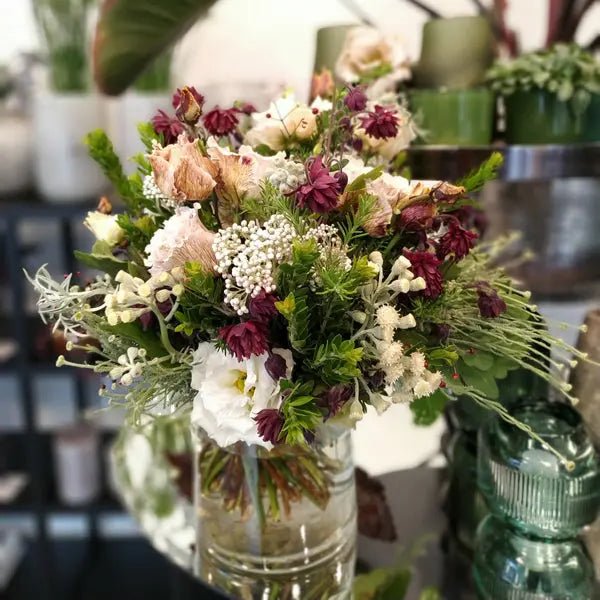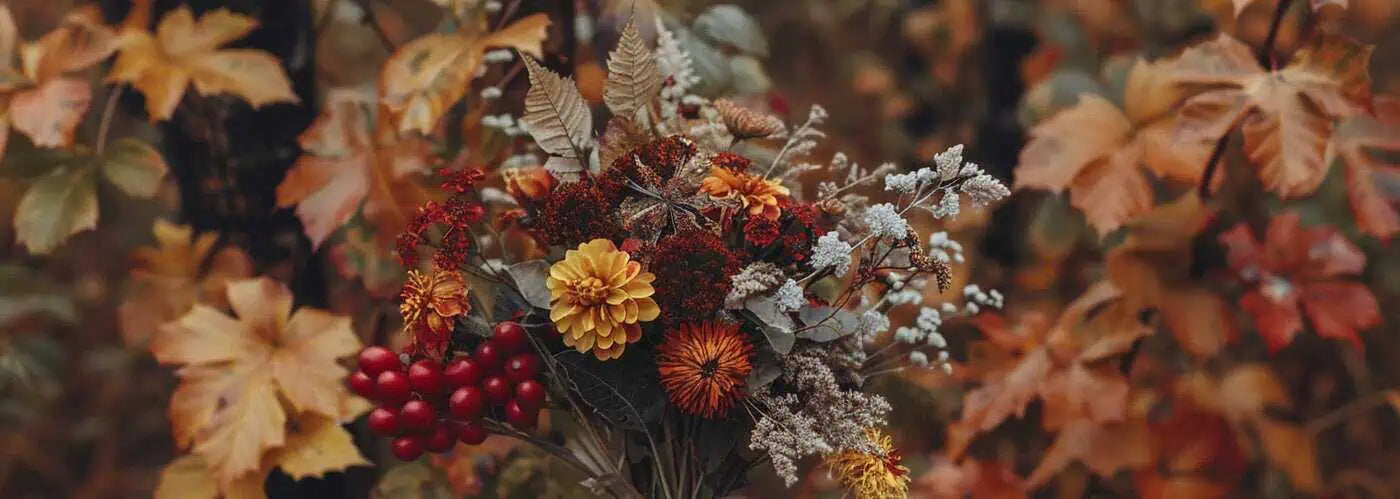
Autumn flowers from Switzerland: The ultimate guide
Swiss autumn flowers bloom in their most beautiful splendor from September to October – with chrysanthemums, dahlias, and sunflowers as the regional stars of the season. This short but intense blooming period makes local autumn flowers something special: They are fresher, more sustainable, and last significantly longer in a vase than imported goods. From November to January, there are practically no Swiss flowers left, as it becomes too cold – one more reason to fully enjoy the golden autumn season of September and October. Swiss flower production is characterized by short transport routes, strict pesticide regulations, and an impressive variety of varieties that has long been lost in international mass production.
The stars of Swiss autumn flowers
During the peak season in September and early October, Swiss flower production offers an impressive selection of autumn flowers. Chrysanthemums, dahlias, and sunflowers dominate as local autumn classics, complemented by hydrangeas (until September), roses from Swiss greenhouses, and eucalyptus and gypsophila as decorative companions.
Chrysanthemums are the absolute autumn champions among Swiss flowers. Specialized growers cultivate autumn chrysanthemums on thousands of square meters, producing up to several thousand stems daily. The flowers come in every imaginable shape—from pompom-like balls to spidery varieties with thread-like petals—and in virtually every color except blue. Their vase life is exceptionally good, lasting seven to fourteen days, making them ideal cut flowers. Typical autumn colors range from golden yellow to bronze to deep burgundy.
Dahlias are often called the peonies of autumn and bloom in Switzerland until the first frost, typically through September and October. Various Swiss producers cultivate dahlias on several hectares of outdoor land. With eighteen official flower shapes—from cactus-like to water lily-like to decorative pompoms—and sizes ranging from two to forty centimeters in diameter, they are true quick-change artists. The color palette includes everything from white to pink and orange to dark red and even black. At three to seven days, their vase life is shorter than that of chrysanthemums, but their spectacular appearance more than makes up for this.
Sunflowers are among the highlights of Swiss autumn production and are cultivated by several farms. Their flowering period extends from July to September, with occasional blooms continuing into October. Modern varieties no longer offer only the classic sunflower yellow, but also orange, red, burgundy, and even chocolate brown. Pollen-free single-stem varieties are particularly practical for vases, lasting six to fourteen days and leaving no stains.
Swiss-grown hydrangeas are still available in September. Various producers cultivate them deliberately because they are too bulky or delicate for transport—a perfect example of why regional production makes sense. The large, voluminous flower heads in blue, pink, white, or green last for several weeks in a vase and are also ideal for drying.
Roses are grown in greenhouses in Switzerland year-round. Swiss producers focus on special colors and varieties rather than standard red and white to distinguish themselves from imported roses. Autumn roses in warm shades of orange, red, and burgundy are perfectly suited to the season and last five to seven days in a vase.
Eucalyptus is one of the few Swiss-grown plants still available in November. The silvery-green branches smell wonderful and last practically forever—they simply dry in a vase and retain their shape and color. Baby's breath (Gypsophila) is also produced in Switzerland and is the perfect airy companion for autumnal bouquets.
Imported flowers as a useful addition
While Swiss flowers should form the basis of authentic autumn bouquets, some imported varieties can be a useful addition. Anemones, with their characteristic black centers, are not produced in Switzerland in the fall, but their color complements native dahlias and roses beautifully. Physalis (Cinnamon Lantern), with its bright orange lanterns, is the perfect autumn accessory, but is not grown commercially in Switzerland. Gerberas are largely imported; only a few Swiss companies produce special gerbera varieties in their own greenhouses.
When purchasing, keep in mind: only about 30 to 40 percent of the flowers sold in Switzerland are actually produced domestically during the peak season. From November to January, virtually all flowers are imported, primarily from the Netherlands (as a transshipment point), Kenya, Colombia, and Ecuador. Those who value sustainability should therefore specifically ask for the Floriance quality label for Swiss flowers.
Practical care tips for long-lasting enjoyment
Proper care begins with the purchase: thanks to short transport routes, Swiss flowers reach the market the same day or the next, giving them a significant advantage in terms of freshness over imported goods, which often take days to arrive.
The basic rules apply to all fall flowers: Cut the stems diagonally (45 degrees) with a sharp, clean knife and remove all leaves below the waterline. Use lukewarm water with flower food, changing the water every two to three days. Place the flowers in a cool location, away from direct sunlight, heaters, and ripening fruit (ethylene gas shortens shelf life).
Chrysanthemums are particularly easy to care for and last seven to fourteen days. Important: Remove all leaves completely, as chrysanthemum foliage yellows quickly. Fully opened chrysanthemums do not require flower food – this can even lead to yellowing of the leaves. Flower food is only advisable when the buds are still closed. The stems should be cut at a 60-degree angle to prevent them from bending under the weight of the flowers.
Dahlias require special care due to their hollow stems and vase life of only three to seven days. Using flower food with a sugar component is crucial—dahlias need sugar! Cut the stems underwater to avoid air bubbles, and then fill the hollow stems with water. Professional florists recommend conditioning dahlias for twelve to sixteen hours at two to six degrees Celsius after cutting. Change the water at least every two days and recut the stems.
Sunflowers drink a lot and need fresh water every day. They last seven to ten days if you re-cut the stems every one to two days. Despite their name, sunflowers shouldn't be placed in direct sunlight—a cool, shady location will significantly extend their shelf life. Add sugar and lemon juice or commercial flower food to the water.
Hydrangeas are extremely thirsty—after all, "hydra" means water. Make vertical cuts in the woody stems to improve water absorption and mist the blossoms regularly. If hydrangeas wilt, immerse the entire bloom in lukewarm water for 30 to 60 minutes—it works wonders. To dry, simply leave hydrangeas in a cool, dry place with minimal water.
Roses prefer cold water and should be given fresh water with flower food every two to three days. Remove all leaves below the waterline, but wait to remove the outer protective leaves until shortly before use. If the roses are drooping, changing the water and cutting them freshly will help—the roses should recover within two to three hours.
Eucalyptus and baby's breath are the easiest to care for. Both stay fresh for two to three weeks and can then be easily dried, with eucalyptus retaining its fragrance. They require minimal water and can be combined with all other autumn flowers.
Create harmonious autumn arrangements
The cooler temperatures and shorter days in autumn naturally extend the lifespan of flowers—a major benefit of the season. Take advantage of this for lush, mixed arrangements with different textures.
Classic autumn combinations emphasize warm tones: Combine golden-yellow chrysanthemums with bronze dahlias and orange-red sunflowers. Add eucalyptus for silvery-green accents and baby's breath for airiness. This combination of Swiss flowers will last at least a week.
Elegant arrangements are created by combining roses, hydrangeas, and—as an imported addition—anemones with their black centers. Eucalyptus branches add structure and a modern flair to the composition. This romantic blend is perfect for festive occasions.
Rustic bouquets thrive on the combination of large sunflowers with delicate baby's breath and eucalyptus branches. If desired, imported physalis lanterns can be added for an additional autumnal accent. This combination exudes a cozy autumnal mood and pairs beautifully with natural materials like wood or jute.
When designing, use an odd number of main flowers (three, five, seven) for a harmonious overall look. Start with the largest blooms as focal points, then fill in with medium-sized flowers, and finally add greenery and filler elements. The height of the arrangement should be about one and a half times the height of the vase. Use wide vases for stable arrangements, especially for heavy blooms like dahlias and sunflowers.
Autumn arrangements in practice
For chrysanthemum arrangements, use wide vases filled with water up to half the stem length. The various flower shapes—from pompom-like balls to spider-like varieties to large spherical blooms—create interesting arrangements simply through their variety. Combine different autumn colors, from golden yellow to bronze to burgundy, for maximum impact.
Dahlias deserve special attention: Their spectacular blooms deserve room to shine. Use three to five dahlias as focal points and complement them with airy baby's breath and eucalyptus branches. Since dahlias prefer shorter stems for better water absorption, low to medium-height vases are particularly suitable. The cooler autumn temperatures extend the otherwise short vase life by precious days.
Mixed arrangements benefit from combining different longevity options: Use long-lasting chrysanthemums and eucalyptus as a base, complementing them with roses and dahlias as highlights. When the more delicate flowers fade after a few days, remove them—the chrysanthemums and greenery will last for another week.
What makes Swiss autumn flowers special
Swiss flower production differs fundamentally from international mass production. Freshness is paramount: Swiss flowers reach florists the same day or the day after harvest, while imported flowers often take a week to arrive. These short transport routes mean three to five days longer in your home vase—a measurable difference, especially for demanding flowers like dahlias.
Sustainability is standard in Switzerland: Pesticide regulations are significantly stricter than internationally, and many producers work with effective microorganisms and beneficial organisms instead of chemicals. Some companies are even experimenting with completely pesticide-free outdoor production. Short transport routes mean a minimal carbon footprint—a clear advantage over roses imported by air from Kenya or Colombia.
Varietal diversity rather than monoculture characterizes Swiss farms: While international producers focus on a few profitable varieties, Swiss family farms often cultivate 50 to 130 different varieties. Many farms emphasize that they cultivate heirloom varieties that are no longer available internationally. This biodiversity preserves genetic diversity and offers special flowers that cannot be found anywhere else.
Transparency and direct marketing characterize the Swiss industry: Production methods are 100% traceable, and many producers work directly with local florists. The Floriance quality label guarantees Swiss origin and was specifically created to identify local flowers.
The seasonal limitation from February to October is both a challenge and a sign of quality: Swiss autumn flowers are special precisely because they are not available year-round. From November to January, Swiss flower production virtually ceases—only eucalyptus, ivy, and a few chrysanthemums survive the cold. This scarcity makes the abundance of September and October all the more valuable.
Conclusion: Regional, sustainable, fresh
Autumn flowers produced in Switzerland combine quality with sustainability. From September to October, local growers offer an impressive selection of chrysanthemums, dahlias, sunflowers, hydrangeas, roses, eucalyptus, and baby's breath for every taste and every occasion. The extreme freshness achieved through short transport routes, strict environmental responsibility, and the preserved variety of varieties make every Swiss autumn bouquet a conscious choice for quality. Complemented by carefully selected imported flowers such as anemones or physalis, the result is arrangements that perfectly capture the golden season – and, with proper care, will provide long-lasting enjoyment.

